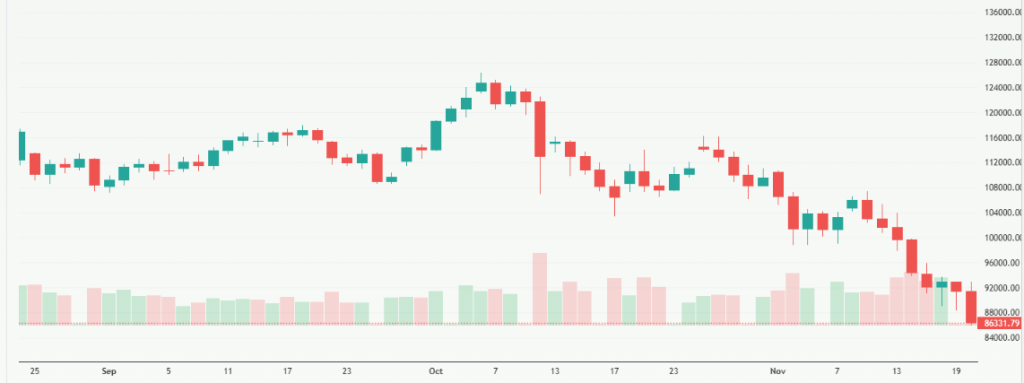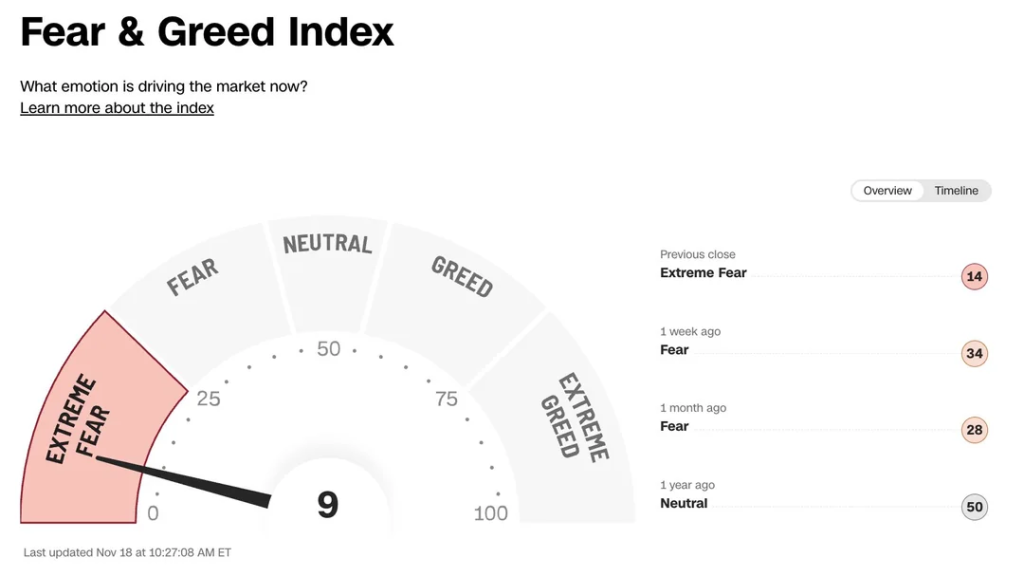Crypto Liquidation Spikes: Over $1.7B Wiped Out as Bitcoin Approaches $80K
On 21 November 2025, the crypto market saw one of its biggest shake-ups of the year. More than $1.7 billion in leveraged positions were wiped out in a single trading wave. This happened as Bitcoin moved close to the $80,000 mark, a level many traders were watching closely. The fast jump in price caught both long and short traders by surprise. Many positions were liquidated within minutes.
This event shows how fragile high-leverage trading can be. When prices move too fast, even by a small margin, forced liquidations begin. Once they start, they trigger more sales. This creates a chain reaction across major exchanges. Platforms like Binance, Bybit, and OKX saw sharp spikes in both long and short liquidations.
For many investors, this was a warning. For others, it looked like a chance to buy dips during strong market momentum. As Bitcoin inches toward a new all-time high, the market is clearly facing both excitement and fear at the same time.
What Triggered the Liquidation Spike?
A sharp price swing pushed many traders out. Bitcoin’s quick move toward $80,000 forced margin calls. Highly leveraged positions could not be held. Automated liquidations hit within minutes. ETF flows and profit-taking by big holders added pressure. Thin order books made price swings larger. Macro headlines about interest rates and risk assets also weighed on sentiment. These combined forces turned routine volatility into a cascade of forced sells.
Breakdown of the $1.7B Liquidations
More than $1.7 billion in positions were closed in the recent spike. Both longs and shorts took losses, but long positions bore the larger share. Major derivatives venues reported heavy activity on the sell side. Ethereum and several large altcoins saw big drops alongside Bitcoin. Exchanges such as Binance, Bybit, and OKX recorded the sharpest spikes in liquidations. The event unfolded over a short window on 21 November 2025, amplifying market stress.
Why are liquidation Cascades Common in Crypto?
The crypto market allows high leverage. Traders can use 5x to 100x margin on some platforms. Leverage makes both gains and losses larger. When price moves fast, margin calls hit. Liquidators sell the position to repay lenders. That sale can push prices further, triggering more liquidations. The process repeats until volatility cools or liquidity deepens. Traditional markets have safeguards that reduce this chain effect. Crypto markets are still less mature.
Bitcoin’s Journey Toward $80K

Several forces pushed Bitcoin higher before the drop. Spot ETF inflows fueled demand earlier in the year. Institutional allocations and public-treasury buys also added buying pressure. At the same time, some large holders reduced exposure and booked profits. That mix created fragile supply conditions. Short-dated options with strike prices near $80,000 saw heavy activity in early November, signaling concentrated bets around that level. The tug between aggressive buyers and profit-taking sellers set the stage for rapid moves.
Market Reactions and Investor Sentiment
Retail traders showed fear on social channels and dashboards. The Fear & Greed Index dropped to extreme fear readings during the event. Institutional players reacted with caution. Some funds increased cash buffers. Others bought the dip.

Analysts were divided. Some called the liquidations a cleansing event that reduces excess leverage. Others warned that persistent ETF outflows and macro risk could prolong market weakness. News of large single-day ETF redemptions on 19-20 November 2025 added to the worry.
Impact on Altcoins and the Broader Market
Altcoins felt stronger pain than Bitcoin. Small-cap tokens suffered the most. Liquidity dried up in lower-volume markets, creating deeper percentage moves. Major tokens like Ethereum saw linked selling as derivative desks hedged positions. The market cap of crypto fell noticeably across the week, with several large holders shifting holdings to spot wallets or selling into rallies. This reshaped short-term market breadth and left many coins weaker.
What does this mean for Traders?
High leverage increases risk. Traders should set clear stop-loss levels. Position sizing is critical. Margin use should match risk tolerance. During thin liquidity, limit orders can fail or fill at worse prices. Monitoring exchange heatmaps and funding rates can help. Some traders may test tools such as an AI stock research analysis tool for cross-asset signals, but any tool is only as good as the risk rules applied. Keep cash for opportunities. Expect swift moves and plan exits before the market moves.
Outlook for Bitcoin and the Market
Near-term direction depends on ETF flows and macro news. If spot ETF inflows return, buyers could support levels above $80,000. If outflows persist, more weakness could follow. Key technical levels to watch include support near the recent low and resistance around the $80,000 psychological mark. Volatility will likely remain elevated into the month-end. Institutional behaviour will be decisive; large redemptions or buys can swing prices quickly. Watch central bank commentary on rates and liquidity for broader cues.
Bottom Line
The $1.7 billion liquidation episode on 21 November 2025 highlights the dual nature of crypto. The market can climb fast. It can also unwind fast. Leverage and thin liquidity amplify moves. Traders should respect risk management. Investors should track flows and holder behaviour. Short-term pain can create long-term opportunity, but only for those who plan and manage risk.
Frequently Asked Questions (FAQs)
On 21 November 2025, rapid Bitcoin price swings forced many leveraged positions to close. Traders lost $1.7B as exchanges automatically sold positions to cover margin calls.
Leverage lets traders borrow funds to increase trades. If prices move against them, exchanges sell positions automatically. This can cause a chain reaction, wiping out funds quickly.
Bitcoin neared $80,000 in November 2025, but liquidations caused short-term drops. Future moves depend on investor demand, ETF flows, and market conditions. Prices could rise or fall.
Disclaimer: The content shared by Meyka AI PTY LTD is solely for research and informational purposes. Meyka is not a financial advisory service, and the information provided should not be considered investment or trading advice.






